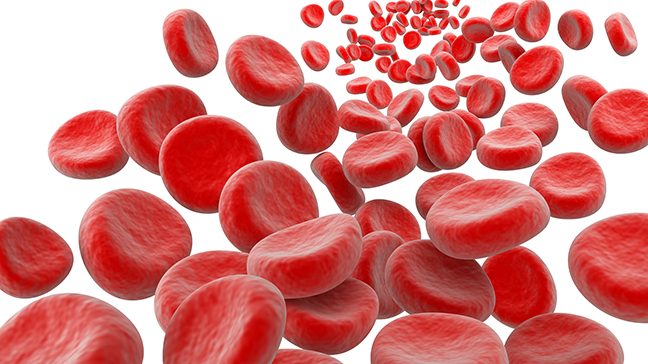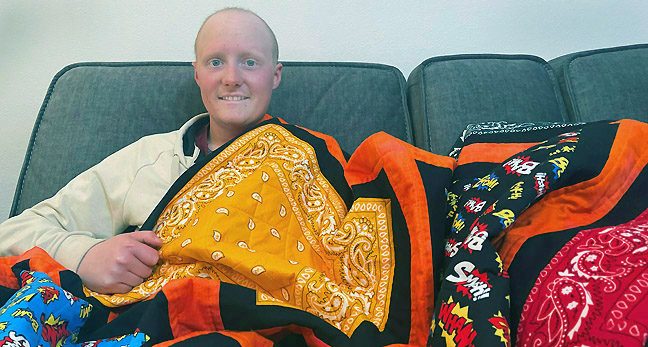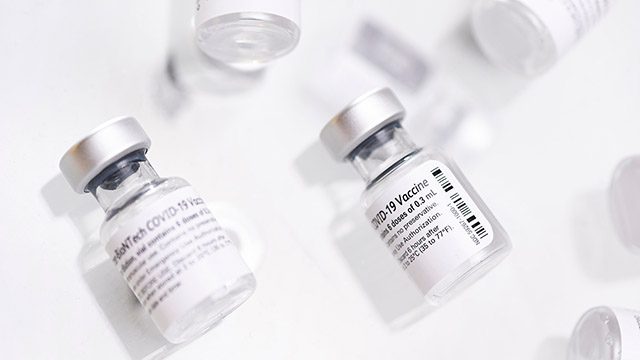Types of stem cell transplants
- Treatment Options
- Ablation Therapy
- Angiogenesis Inhibitors
- Awake Craniotomy
- Brachytherapy
- Breast Reconstruction Surgery
- CAR T Cell Therapy
- Chemotherapy
- Cryoablation
- High-Intensity Focused Ultrasound (HIFU)
- Histotripsy
- Hyperthermic Intraperitoneal Chemotherapy
- Immunotherapy
- Immune Checkpoint Inhibitors
- Integrative Medicine
- Interventional Oncology
- Laser Interstitial Thermal Therapy (LITT)
- Microwave Ablation
- Minimally Invasive Surgery
- MR-Linac Radiation Therapy
- Palliative Care
- Proton Therapy
- Radiation Therapy
- Radiofrequency Ablation
- Stem Cell (Bone Marrow) Transplantation
- Stereotactic Body Radiation Therapy
- Stereotactic Radiosurgery
- Surgery
- Targeted Therapy
- Theranostics
- Y90 Radioembolization
Stem Cell & Bone Marrow Transplantation
A stem cell transplant (also known as a bone marrow transplant) replaces defective or cancerous bone marrow with new, healthy bone marrow cells. This procedure is used to treat certain cancers, including leukemia and lymphoma. It can also help patients recover from or better tolerate cancer treatment.
What is a stem cell?
Stem cells are specialized cells that can mature into different kinds of cells, depending on what your body needs. They are located in various places throughout your body, including your bone marrow. Bone marrow contains hematopoietic stem cells that constantly divide to produce all the different kinds of blood cells. Young hematopoietic stem cells can mature into any of the following cell types:
- Red blood cells, which carry oxygen
- Platelets, which help the blood clot
- White blood cells, which help fight infection
Any disease or condition that impacts the ability of your bone marrow to produce new blood cells can have serious health consequences. Stem cell transplantation may be an effective treatment for such conditions.
What diseases do stem cell transplants treat?
Stem cell transplants are used to treat cancers and blood disorders that affect the bone marrow. Some of the most common conditions include:
- Blood cancers like leukemia, lymphoma, myelodysplastic syndromes, myeloproliferative disorders and multiple myeloma
- Bone marrow disorders like aplastic anemia
- Genetic blood diseases such as sickle cell anemia, and autoimmune diseases, like multiple sclerosis.
If your doctor recommends a stem cell transplant, it’s often because other treatments haven't worked well enough or because your condition requires a stronger approach.
Who gets stem cell transplants?
A stem cell transplant might be an option if:
- You have a blood cancer that has come back or isn’t responding to treatment
- Your bone marrow isn’t making enough healthy blood cells
- You have a genetic or immune disorder that affects your blood or bone marrow
Your doctor will consider factors like your overall health, age, and type of disease to decide if a stem cell transplant is right for you.
What happens during a stem cell transplant procedure?
The process requires a hospital stay, careful monitoring, and protective measures due to the patient's vulnerable immune state. A stem cell transplant is a step-by-step process:
- Harvesting: Generally, the first step to a successful stem cell transplant is harvesting healthy bone marrow, either from the patient or from a donor. This procedure is often done at an outpatient clinic. This involves putting the patient or donor under general anesthesia and using a large needle to remove bone marrow from their pelvis. The bone marrow can then be frozen and stored.
Alternatively, stem cells can be collected from a patient's or donor’s blood using a process called leukapheresis. This requires an injection that causes blood stem cells to move from the bone marrow into the bloodstream. During this process, blood is drawn, stem cells are separated and stored, and the remaining blood is returned to the patient. These stem cells are later infused back after high-dose treatment (the preparation phase) to help restore bone marrow function.
- Preparation (Conditioning Therapy): You’ll receive high-dose chemotherapy (and sometimes radiation) to destroy diseased bone marrow cells and make room for new, healthy stem cells.
- Stem Cell Infusion: When it is time for the procedure, the donated marrow is thawed. The healthy stem cells are then given through an IV, much like a blood transfusion.
- Recovery & Engraftment: The new stem cells travel to your bone marrow and start making healthy blood cells. This can take a few weeks.
- Monitoring: You’ll be closely watched for infections, side effects and complications. While you will be discharged from the hospital when your blood counts initially recover, full immune system recovery can take several months to a year.
Below are answers to common questions about what to expect during your hospital stay:
When will I be admitted to the hospital?
You’ll usually check into the hospital a few days before the actual transplant. This is when you’ll begin the conditioning therapy to prepare your body for the new stem cells.
How long will I be in the hospital?
- If you’re getting your own stem cells (autologous transplant), you’ll likely stay in the hospital for about two to three weeks.
- If you’re receiving donor stem cells (allogeneic transplant), the stay is often a bit longer — around three to five weeks, depending on how your body responds.
When can I go home?
You can usually go home when:
- Your immune system has started to recover, especially your white blood cell counts.
- You can eat and drink enough, and don’t need IV fluids or medications.
- There are no signs of serious infection or other complications.
Will I be in isolation during my stay?
Yes, you’ll be in protective isolation while your immune system is very weak.
After the transplant, your body can't fight infections like it normally would. Isolation helps protect you from germs that could cause serious illness during this time.
What does that mean for me?
You’ll have your own private hospital room with special air filters.
Nurses, doctors and visitors may wear masks, gowns and gloves to help keep you safe.
Certain items, such as fresh flowers, are not permitted in your room. However, thoroughly washed raw fruits or vegetables and outside food are allowed.
What are the two types of stem cell transplants?
There are two types of stem cell transplant: autologous and allogeneic.
Autologous stem cell transplant
In an autologous stem cell transplant, the patient’s own healthy stem cells are collected through a process called leukapheresis. Autologous transplantation is most often used to treat diseases like lymphoma and multiple myeloma. Because autologous transplants use the cells of a patient, they have little to no risk of rejection or graft-versus-host disease (GVHD). This makes them safer than allogeneic transplants.
Allogeneic stem cell transplant
An allogeneic bone marrow or stem cell transplant uses donor stem cells to treat blood cancers that affect the bone marrow, like leukemia. The stem cells come from a donor whose tissue closely matches that patient. The donor cells are infused after the patient has undergone chemotherapy and, in some cases, total body irradiation. But beyond restoring the blood-producing ability of the body, allogeneic stem cell transplantation can help fight cancer directly. The donated cells generate a new immune response, meaning they find and kill cancer cells, sometimes better than the original immune cells of the patient. This is called the graft-versus-cancer effect, and it can help fight cancer.
Unfortunately, allogeneic stem cells come with an increased risk of rejection or graft-versus-host disease.
What are the side effects of a stem cell transplant?
Before the transplant, your doctors will need to prepare your body to receive the new stem cells. This is called the preparative or conditioning regimen. It consists of chemotherapy and radiation given several days before your transplant. Stem cell transplant side effects can be caused by the preparative regimen or by the transplant itself.
Side effects can vary, but common ones include:
- Short-term: Fatigue, nausea, vomiting, mouth sores, hair loss and infections due to low immunity.
- Long-term: Weakened immune system, infertility, organ damage and a higher risk of developing another cancer.
Graft-versus-host disease
If you receive donor stem cells, your immune system may react to them, causing graft-versus-host disease (GVHD). This happens when the new immune cells from the donor see the patient’s body as something to attack. GVHD can affect different parts of the body like the skin, liver and stomach, causing reactions like rashes, yellowing skin and stomach pain. There are two forms: acute GVHD, which appears shortly after the transplant, and chronic GVHD, which develops later and may be long-lasting. Doctors may use drugs to calm down the immune system and help manage these symptoms.
Finding stem cell donors
For allogeneic transplants to work, a patient needs to be matched with a donor whose human leukocyte antigen (HLA) proteins closely match theirs. HLA proteins dot your cells' surface and help your body distinguish normal cells from foreign cells. If the HLA proteins of a donor are a poor match to a patient, there is an increased risk of GVHD.
HLA typing matches stem cell transplant patients with eligible donors. In HLA typing, a blood sample from a patient is compared with samples from family members or a donor registry. The best match is usually a sibling. However, about 75% of patients do not have a suitable matching donor in their family and require cells from a matched unrelated donor (MUD). Stem cell donors are located through registries such as the National Marrow Donor Program. It can sometimes take several weeks or longer to find a suitable donor.
If a suitable donor cannot be found, there are other options, including:
- Haploidentical transplants: This type of transplant uses bone marrow or peripheral blood stem cells from a first-degree relative (such as a parent, sibling or child) who is a half-match for a patient. Haploidentical transplants have become safer over time, and they have the benefit of decreased wait time. Safety has improved with changes to treatment plans before the transplant, medicines to help prevent GVHD, careful monitoring during the transplant process and additional medications to manage side effects.
- Umbilical cord blood transplant: The umbilical cord connects a fetus to the placenta during pregnancy. It contains hematopoietic stem cells. Once the baby is born, the umbilical cord is no longer needed. Its stem cells can be harvested and saved in a cord blood bank for use in cancer treatments. The MD Anderson Cord Blood Bank actively seeks donations of umbilical cords.
Stem Cell Transplantation and Cellular Therapy Center
Appointments at MD Anderson
Our Health Information Specialists can answer your questions about MD Anderson and help you schedule an appointment.
- To speak with a Health Information Specialist, call 877-632-6789.
Need a stem cell transplant? 4 tips to make your life easier
Cancer patients usually have to make some lifestyle adjustments to accommodate their treatment. That could mean anything from taking time off to recover from surgery to waking up early to get to chemotherapy infusions before heading in to work.
Everyone’s accommodations will look a little different, depending on the type of cancer they have, how advanced it is and their individual treatment plan.
But what if you need a stem cell transplant to treat leukemia, lymphoma, myeloma or some other blood disorder?
Here are four suggestions to help you prepare for that procedure.
Know your stem cell transplants to manage your expectations
Stem cell transplants replace damaged or faulty blood cells with healthy cells. They do this by “rebooting” the immune system with an infusion of new stem cells after the old ones have been destroyed (along with cancer cells) by chemotherapy. All stem cell transplants fall into one of two categories:
- Allogeneic stem cell transplants use cells from a matched donor; these could come from a family member, umbilical cord blood or a completely unrelated individual.
- Autologous stem cell transplants use your own cells.
Some patients think they can move forward with a transplant right away, even if they need a donor’s cells. But that’s not always the case.
Even in the earliest stages of donor identification, there’s a lot of waiting to find out if someone is a good match for you. Then, you have to find out if they are still willing and able to donate, as well as how soon they can have their stem cells extracted.
A lot of people who register for the National Marrow Donor Program are young college students with class schedules to work around. So, you might have to wait a few months until they get time off around the winter holidays, spring break or summer vacation.
You’ll need a place to stay
No matter which type of stem cell transplant you receive, you’ll need to be isolated in the hospital for at least 30 days after the infusion. This is to protect you while the new cells engraft and start rebuilding your immune system.
It can take a while for your immune system to bounce back completely after a stem cell transplant. So, you’ll likely be asked to remain close to the hospital for at least a few more weeks — if not months — after you’re discharged. This is so you can get back to the hospital quickly if you develop a fever, an infection or any other complication.
If you’re getting a stem cell transplant at MD Anderson, there are many lodging options in or near the Texas Medical Center, including hotels, apartments, and trailer parks. Some offer special or reduced rates for people seeking medical treatment.
But if you’re visiting Houston for the first time, you might need some help sorting through it all. Our social workers can help. You can request a referral through MyChart or contact Social Work directly for assistance.
Be prepared: Have a ‘go bag’ ready
There’s a good chance you might be on “stand-by” status if you’re waiting for stem cells to be provided by someone else. So, the next time you hear from your care team could well be the minute the transplant is actually ready — and you’ll need to get to the hospital ASAP.
That’s why it’s helpful to have a “go bag” packed with the essentials: you can get to the hospital quickly. Recovery from a stem cell transplant could take a month or longer. So, pack a few meaningful personal items like photos and other keepsakes, to make your room feel homier and less like a hospital.
Get your house in order before you leave
Now that you know you’ll need to be in a hospital for at least 30 days, what has to happen to make that possible? Do you need to set up automatic bill payments through your bank? Ask a neighbor to get the mail and mow your lawn? Make arrangements with friends or siblings for long-term child care?
Not everyone has the flexibility to work remotely, but if you do, now’s the time to look into it. If not, at least make sure your application for job protection has been granted through the Family and Medical Leave Act.
Unfortunately, life doesn’t stop just because you’re getting a stem cell transplant. But if you plan ahead as much as possible, you can make your own life — and those of others’ — much less stressful.
John Lugo is a social work counselor who leads a bi-monthly support group for stem cell transplant recipients and their caregivers.
Request an appointment at MD Anderson online or call 1-877-632-6789.
Featured Articles

Understanding allogeneic stem cell transplants: What you need to know

Three years after stem cell transplant, leukemia survivor meets her perfect match

Bonded by a stem cell transplant, leukemia survivor and his donor become family for life

Autologous stem cell transplants: What to expect

Stem cell transplant wipes out all signs of cancer in acute myeloid leukemia survivor

Myelofibrosis survivor: A stem cell transplant was the right decision for me

COVID-19 revaccination needed after stem cell transplants and CAR T cell therapy

Graft vs. host disease: 6 things to know about this stem cell transplant side effect
request an appointment online.
Help #EndCancer
Give Now
Donate Blood
Our patients depend on blood and platelet donations.
Shop MD Anderson
Show your support for our mission through branded merchandise.

